| |
|
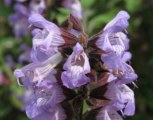 | |
| MaltaWildPlants.com by Stephen Mifsud |

|
| |
|
|
 |  |  |  |
| External Links: |
|
Bellis annua (Annual Daisy) |
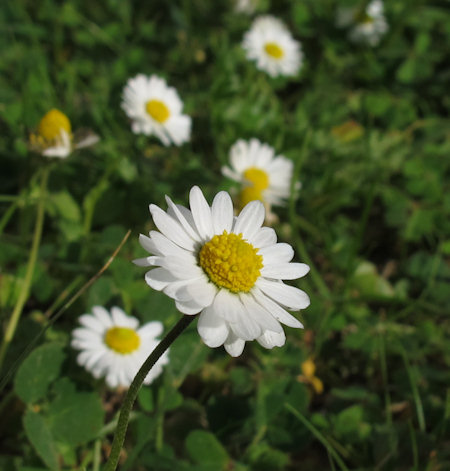
Bellis annua (ASTERACEAE.)
Images for this profile are taken from the Maltese Islands after year 2000. |
|
| Nomenclature |
Species name: |
Bellis annua L. |
Author(s): |
Carl von Linne, Sweden, (1707 - 1778)
|
Common names: |
Annual Daisy |
Maltese name: |
Bebuna |
Plant Family: |
Asteraceae (Daisy or Sunflower Family) |
Name Derivation: |
Bellis = word meaning dainty and pretty used back by Pliny (1st century) for daisy-like plants. (Latin origin ); 2 = pretty (Latin).
annua = annual life cycle, lives for one season or year. (Latin origin ); 2 = annual, lives for one year (Latin). |
Synonyms: |
Bellis vandasii |
Remarks: |
|
|
| Morphology and structure |
PLANT STRUCTURE: |
Character | Growth Form | Branching | Surface |
Description | | | |
General
Picture |  |  |  |
|
LEAVES: |
Character | Arrangement | Attachment | Venation |
Description | | | |
General
Picture |  | 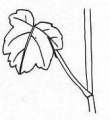 |  |
| |
Character | Leaf Shape | Leaf Margin | Remarks |
Description | | | |
General
Picture |  | 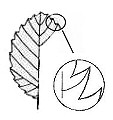 |  |
|
FLOWERS: |
Character | Colour | Basic Flower Type | No. of Petals | No. of Sepals |
Description | White with a yellow central disc. | | 28-36 Referring to the ray florets. | 14-18 Referring to the phyllaries of the involucre. |
General
Picture | | 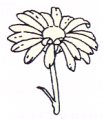 |  |  |
| |
Character | Inflorescence | Description | Ovary | Stamens |
Description | | Radiating flower heads consisting of a cluster of central yellow disc-florets, maturing from circumference to center, and numerous (about 30) radiating ray-florets with white petals of about 5mm length. | | |
General
Picture |  |  | 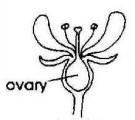 | 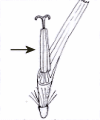 |
| |
Character | Scent | Average Flower Size | Pollen Colour | Other Notes |
Description | None or very faint | 12-15mm | | |
|
SEEDS: |
Character | No. Per Fruit | Shape | Size | Colour |
Description | 80-150 (per flower head). | | 1mm | Orange / Light brown |
General
Picture |  | 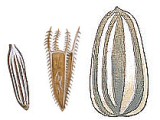 |  |  |
|
FRUIT AND OTHER BOTANICAL DATA: |
Character | Fruit Type | Colour of Fruit | Subterranean Parts | Other Notes |
Description | | Light brown | | - |
General
Picture | 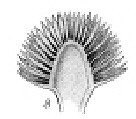 |  |  |  |
|
|
| Plant description and characters | |
Life Cycle: | Annual. |
Growth Form: | THEROPHYTE (annual plants, herbaceous) |
Habitat: | Damp places with humid, clayey soil including field margins, steppe and rocky ground. Prefers to grow close to the coast |
Frequency: | Frequent |
Localities in Malta: | Frequent in several garigues in Malta and Gozo such as at Buskett, Bahrija, Bahar ic-caghaq, Wied Encita and Dingli. |
Plant Height: | 5-10cm. |
| Nov-Mar |
Protection in Malta: | Not legally protected till the last update of this website (2/Mar/2022) |
Red List 1989: | Not listed in the Red Data Book of the Maltese Islands |
Poison: | |
As its name suggests Bellis annua - the plant is an annual, unlike other perennial Bellis species. It is a short plant, between 5cm and 10cm long with erect or prostrate branching stems and single, solitary, radiating flower heads at the end of every flowering stem.
The slender stem (stem) is green and covered with short, whitish, velvety hair especially at the flowering end.
The short leaves (14mm-20mm long) are arranged alternately along the lower part of the stem and attached to by a stalk. They have the shape of a round/oval spoon with a slightly and somehow symmetrical serrated outline - not more then 6 teeth per leaf. Leaves also possess white short hair but less in amount from the stem.
The flowers are typically daisy like, with numerous radiating white petals (about 30) and a yellow center made up of about a hundred of disc florets. However the flower differs from the common daises since it is relatively small - about 12-15mm diameter. Flower heads are held by a collection of phyllaries, collectively known as the involucre, which is bell shaped and a have a zigzag border at the top, just under the petals. The petals, of the ray florets, are fully white, without purple tinge at the tips (as in B. perennis). Like all members of the Compositaee (Asteraceae) family, the true flowers are those tiny, yellow disc florets at the center, lying on a receptacle, of which this flower have it swollen.
Each disc-floret (or ray-floret) have an underlying ovary, in which fertilisation takes place and then the ovary itself develops into the seed, hence the wall of the ovary itself become the outer coat of the seed. The seeds are referred to as achenes and for this species they are slightly hairy, orange-brown in colour, roundish teeth-like shape, and 1mm long.
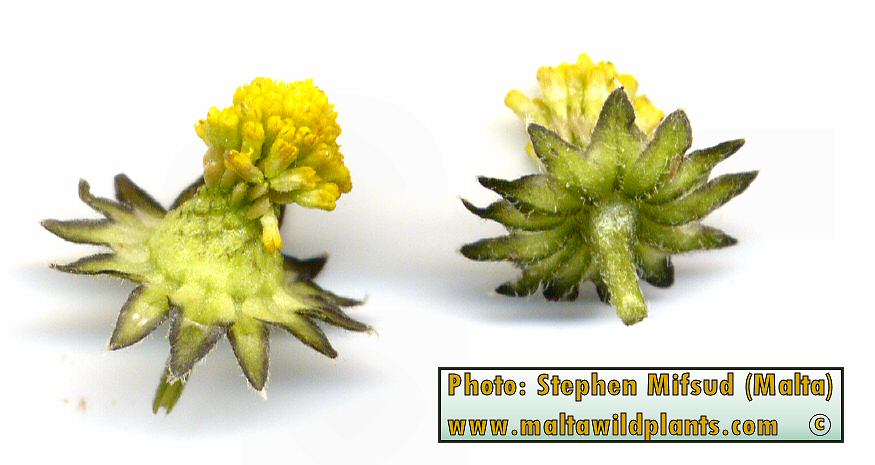 Since ovaries develop into seeds, there is no true fruit structure. During seed formation, the star shaped and spread-out involucular phyllaries and the swollen receptacle with a top of some un-detached, old, yellow disc florets makes a distinctive structural feature to recognize the plant.
Since ovaries develop into seeds, there is no true fruit structure. During seed formation, the star shaped and spread-out involucular phyllaries and the swollen receptacle with a top of some un-detached, old, yellow disc florets makes a distinctive structural feature to recognize the plant.
|
|
| Information, uses and other details |
Medicinal Uses
The following properties are taken from the source - Plants for a future [WWW-02] which where described for the common daisy (B. perennis). Since B. perennis and B. annua are very closely related, it is very probable that both share the same medicinal properties.
| Anodyne |
used to relieve pain. [WWW-32] |
| Antispasmodic |
used to relieve or prevent spasms (especially of the smooth muscles) [WWW-32] |
| Antitussive |
used to suppress or relieve coughing. [WWW-32]
|
| AntiCancer |
used in the treatment of cancer; "anticancer drug"; "an antineoplastic effect". [WWW-32] |
| Demulcent |
a medication (in the form of an oil or salve etc.) that soothes inflamed or injured skin. [WWW-32] |
| Digestive |
used to aid digestion, as a food or medicine. [WWW-32] |
| Emollient |
substances resembling cream that have a soothing and moisturising effect when applied to the skin. [WWW-32] |
| Expectorant |
used to induce the ejection of mucus, phlegm, and other fluids from the lungs and air passages by coughing or spitting. [WWW-32] |
| Laxative |
Having the effect of loosening or opening the intestines, hence stimulating evacuation of feces and so relieving from constipation. [WWW-32] |
| Ophthalmic |
relating to the eye; hence have medicinal properties for the health of the eye. [WWW-32] |
| Purgative |
a purging medicine; stimulates evacuation of the bowels. [WWW-32] |
| Tonic |
a medicine that strengthens and invigorates hence restore normal tone to tissues or to stimulate the appetite. [WWW-32] |
Daisies are a popular domestic remedy with a wide range of applications [7]. They are a traditional wound herb [238] and are also said to be especially useful in treating delicate and listless children [7]. Recent research (1994) has been looking at the possibility of using the plant in HIV therapy [238]. The herb is mildly anodyne, antispasmodic, antitussive, demulcent, digestive, emollient, expectorant, laxative, ophthalmic, purgative and tonic [7, 9, 21]. The fresh or dried flowering heads are normally used [9]. An infusion is used in the treatment of catarrh, rheumatism, arthritis, liver and kidney disorders, as a blood purifier etc [9].
In 1771 Dr. Hill said that an infusion of the leaves was 'excellent against Hectic Fevers. The Daisy was an ingredient of an ointment much used in the fourteenth century for wounds, gout and fevers. [WWW-03]
The daisy once had a great reputation as a cure for fresh wounds [4]. An ointment made from the leaves is applied externally to wounds, bruises etc [4, 232] whilst a distilled water is used internally to treat inflammatory disorders of the liver [4]. Chewing the fresh leaves is said to be a cure for mouth ulcers [244]. Daisies also have a reputation for effectiveness in treating breast cancers [7].
Daisy is useful for coughs and catarrh, and for all conditions that manifest in these forms, Daisy may be used freely and safely. It has a reputation of value in arthritis and rheumatism as well as in liver and kidney problems. Due to its astringency it is also useful for diarrhoea. [WWW-08]
The flowers and leaves are normally used fresh in decoctions, ointments and poultices [238].
A strong decoction of the roots has been recommended for the treatment of scorbutic complaints and eczema, though it needs to be taken for some time before its effect becomes obvious [244]. A mild decoction may ease complaints of the respiratory tract, rheumatic pains and painful or heavy menstruation [244].
The plant, harvested when in flower, is used as a homoeopathic remedy [232]. Its use is especially indicated in the treatment of bruising etc [232].
An document taken from an old medicinal book (from an online Medical historical Library) specifically mentions that the medicinal properties apply for the large daisies (southern and wild daisy) and the small daisies (i.e. the small Bellis annua) The text from this book [WWW-34] states:
" The greater wild Daisie is a Wound Herb of good respect, often used in those Drinks or Salvs that are for Wounds, either inward or out"wards. The Juice or distilled Water of these, or the smal Daisies, do much temper the heat of Choller, and refresheth the Liver and other inward parts. A Decoction made of them and drunk, helpeth to cure the Wounds made in the hollowness of the Breast: The same also cureth al Ulcers and Pustles in the Mouth or Tongue, or in the secret parts. The Leavs bruised and applied to the Cods, or to any other parts that are swollen and hot, doth resolve it and temper the Head: A Decoction made hereof with Walwort and Agrimony and the places fomented or bathed therwith warm, giveth great eas to them that are troubled with the Palsy, Sciatica, or the Gout. The same also disperseth and dissolveth the Knots or Kernels that grow in the Flesh of any part of the Body and the Bruises and Hurts that come of Fals and Blows:
They are also used for Ruptures, and other inward Burnings with very good success. An Oyntment made hereof doth wonderfully help al Wounds that have Inflamations about them, or by reason of moist humors having access unto them, are kept long from healing and such are those for the most part that happen in the Joynts of the Arms or Legs. The Juyce of them dropped into the running Eyes of any doth much help them."
Active Compounds
According to reference [WWW-08] the flower heads of B. perennis (fresh or dried) have the following active components:
- Saponins
- Tannin
- Essential oil
- Flavones
- Bitter principle
- Mucilage. [WWW-08]
Since the flower heads of bellis species are very closely related, it can be safely assumed that the B. annua have the same components [SM]
Other Uses
An insect repellent spray can be made from an infusion of the leaves [57]. On account of the acrid juice contained in the leaves, no cattle will touch it, nor insects attack it. [WWW-03]
Personal Observations
Other Bellis species
Below is a comparison table between B. annua, B. sylvestris and B. perennis - which the latter (the common daisy) is not found in Malta. The Bellis annua is easily recognised by being a very short plant, have alternately branched leaves and stems, and rarely have pink/purple tipped petals. Below is a table of different features between the two species: [SM]
| Feature |
B. sylvestris |
B. perennis |
B. annua |
| Average plant height |
30cm |
15cm |
8cm |
| Leaf arrangement |
Rosette |
Rosette |
Alternately branching leaves |
| Leaf shape |
Oblong spatulate with winged stalks |
Spatulate (more roundish than elongated) and slender stalks |
Spatulate (more roundish than elongated) and slender stalks |
| Leaf veins |
One central mid vein with 1 to 3 branching sub-veins |
One central mid-vein only |
One central mid-vein only |
| Flower head diameter |
30-40mm |
15-30mm |
10-15mm |
| Purple tipped petals |
Common |
Common |
Rare |
|
|
| Links & Further literature
(0 papers) |

Google Web |

Google Images |

Google Scholar |

Research Gate |

Wikipedia |

JSTOR |

GBIF |

Med Checklist |

Cat. of Life |

EoL |

IPNI |

World Flora Online |

Plants of the World Online |

Vienna Virt. Herb. |

RBGE Herbarium |

KEW Herbarium |

MNHN |

Arkive |

IUCN |

CABI |
Kindly Email if there are papers and publications about local
studies or information about this species to be included in the list above.
|
| Photo Gallery (40 Images) | 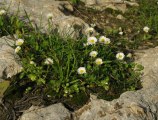 |
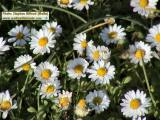 |
 |
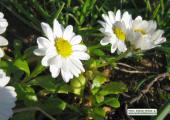 |
IMAGE: BLSAN-01 Photo of few plants growing in shallow soil in a rock gap. |
IMAGE: BLSAN-02 Photo of numerous clusters of white flowers. This species is always found in large group of plants. |
IMAGE: BLSAN-03 Photo of some flowers in the wild. Habitat varies, but often pathways and footpaths close to rocky, exposed areas. |
IMAGE: BLSAN-04 Photo of a plant, low-growing (5-10cm) with small daisy-like flowers. |
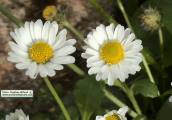 |
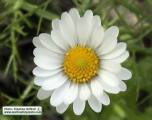 |
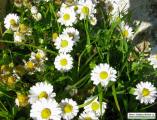 |
| IMAGE: BLSAN-05 Photo of 2 flowers in situ. |
IMAGE: BLSAN-06 Close up photo of a very young flower, due to only a few number of open disc-florets at the periphery of the yellow disc are present. |
IMAGE: BLSAN-07 Photo of many flowers as typically seen in the wild. |
IMAGE: BLSAN-08 - |
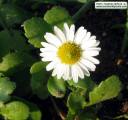 |
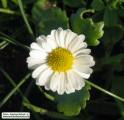 |
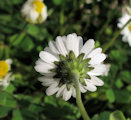 |
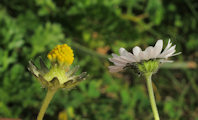 |
IMAGE: BLSAN-09 Close up image of the flower having a diameter of about 11-14mm. |
IMAGE: BLSAN-10 Close up image of the flower. Several white nerrow petals (ray-florets) and yellow disc florets arranged on a swollen receptacke. Most of the florets in this flower are unmature buds. |
IMAGE: BLSAN-11 Photo of lower surface of flower showing the involucre which consists of numerous, overlapping, hairy involucral bracts. |
IMAGE: BLSAN-12 Side view photo of a flower and a mature flower (receptacle) with maturing achenes. |
 |
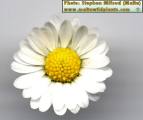 |
 |
 |
IMAGE: BLSAN-13 Close up of two flower heads having white radiating petals and yellow centers where the disc florets are located. |
IMAGE: BLSAN-14 Magnified scanned image of flower showing more details of the central disc florets. |
IMAGE: BLSAN-15 Photo of flowers taken in end November 2010. In Malta, the fLowering period is at its peak in late Autumn, but flowers can be seen even in Spring. |
IMAGE: BLSAN-16 Photo of a group of plants in close vicinity to each other with their small daisy-like flowers. Plants of Bellis annua are found growing in clusters not independently. |
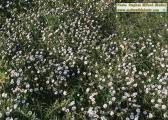 |
 |
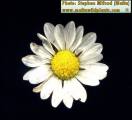 |
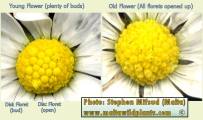 |
IMAGE: BLSAN-17 Carpeting of flowers during the month of December. |
IMAGE: BLSAN-18 Photo of several, low-growing plants that grow in collective numbers, very close to each other. They produce numerous flowers. |
IMAGE: BLSAN-19 Scanned image of flower against dark background. |
IMAGE: BLSAN-20 Scanned enlarged image of two flower centers one being much younger from the other. The young flower still have its disk florets in buds at the centre of the capitulum, with opened florets at the periphery. The old flower has all its florets already opened up. |
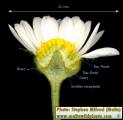 |
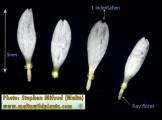 |
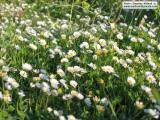 |
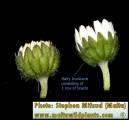 |
IMAGE: BLSAN-21 Magnified image of a longitudinal section of flower head showing the swollen receptacle and the arrangement of disk and ray florets upon it. Below every floret there is the ovary which will develop into a single-seed achene. |
IMAGE: BLSAN-22 Scanned image of the ray-petals with their florets at the base. The petals are actually modified disc florets which have a ray (petal) extending out. For this reason these are named ray-florets and like disc florets they can be fertilising and produce one seed each. |
IMAGE: BLSAN-23 This is the habitat of the plant as found in Malta, hence in patches and gaps in or between bare rock. In such places the water is retained on the rock and hence the soil remains damp and moist during the rainy months. Soil level is not very deep, perhaps a couple of centimeters. |
IMAGE: BLSAN-24 Scanned image of buds, being nearly spherical with flattened white tops and longitudinal fringes of the enclosing phyllaries. |
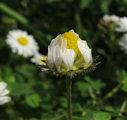 |
 |
 |
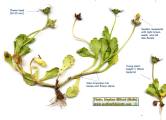 |
IMAGE: BLSAN-25 Flower of blossoming flower in situ. |
IMAGE: BLSAN-26 Image of involucre made up 14-18 phyllaries. The involucre is more or less bell shaped with a zigzag top border below the petals. It is covered with white or colourless hairs. |
IMAGE: BLSAN-27 Scanned image of the short growing plant. |
IMAGE: BLSAN-28 Scanned image of plant. Unlike to several other species of Bellis this species is branched and the leaves are not arranged in a rosette but they grow alternately on the stems. |
 |
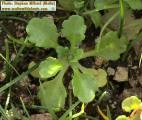 |
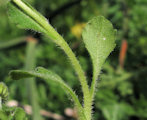 |
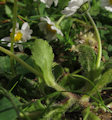 |
IMAGE: BLSAN-29 Scanned image of plant. Height varies from 50 - 100mm. Sometimes the plant takes a slightly prostate position (basal part of plant is laying down and ascend at the upper part) rather than an erect one. |
IMAGE: BLSAN-30 Image of leaves of a young plant in situ. |
IMAGE: BLSAN-31 Photo of leaves, small, spoon-shaped, and minutely crenated. |
IMAGE: BLSAN-32 Photo of leaves which are petiolated and arranged alternately on stem. |
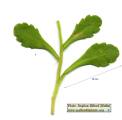 |
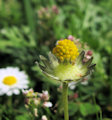 |
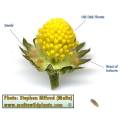 |
 |
IMAGE: BLSAN-33 Scanned image of the leaves, up to 20mm long and with a shallowly serrated margin in a symmetrical fashion (= teeth on left side opposite to right side of leaf). |
IMAGE: BLSAN-34 Photo showing old flower heads where their characteristic swollen receptacle holding several tiny seeds which once where the disc florets. |
IMAGE: BLSAN-35 This plant has no true fruit structure since the seeds just lay bare on the swollen receptacle. The independent ovaries on the receptacle develops into the seeds. The old disc florets are persistent atop the seed-developing ovaries and they fall off just before the seeds are ripe. |
IMAGE: BLSAN-36 As it can be seen, the radiating phyllaries, swollen receptacle, and remaining seeds/ovaries+old florets make the whole structure have a peculiar shape. |
 |
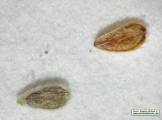 |
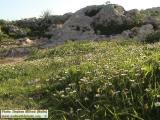 |
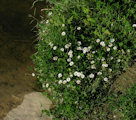 |
IMAGE: BLSAN-37 Scanned image of seeds (and some old florets). The seeds are achenes without pappus, orange-light brown in colur and tooth shaped. Magnified images reveal their fine, white hairs. |
IMAGE: BLSAN-38 Magnified image of seeds under light microscope. Note the fine white hairs sparsely scattered on the seed coat. |
IMAGE: BLSAN-39 Photo of a population of Bellis annua in a steppe in Malta. |
IMAGE: BLSAN-40 Photo of a small patch of plants in a rocky valley side. |
 |
| | | IMAGE: BLSAN-41 Illustration of the plant taken from http://digi.azz.cz. |
IMAGE: BLSAN-42 |
IMAGE: BLSAN-43 |
IMAGE: BLSAN-44 |
|
| | |

